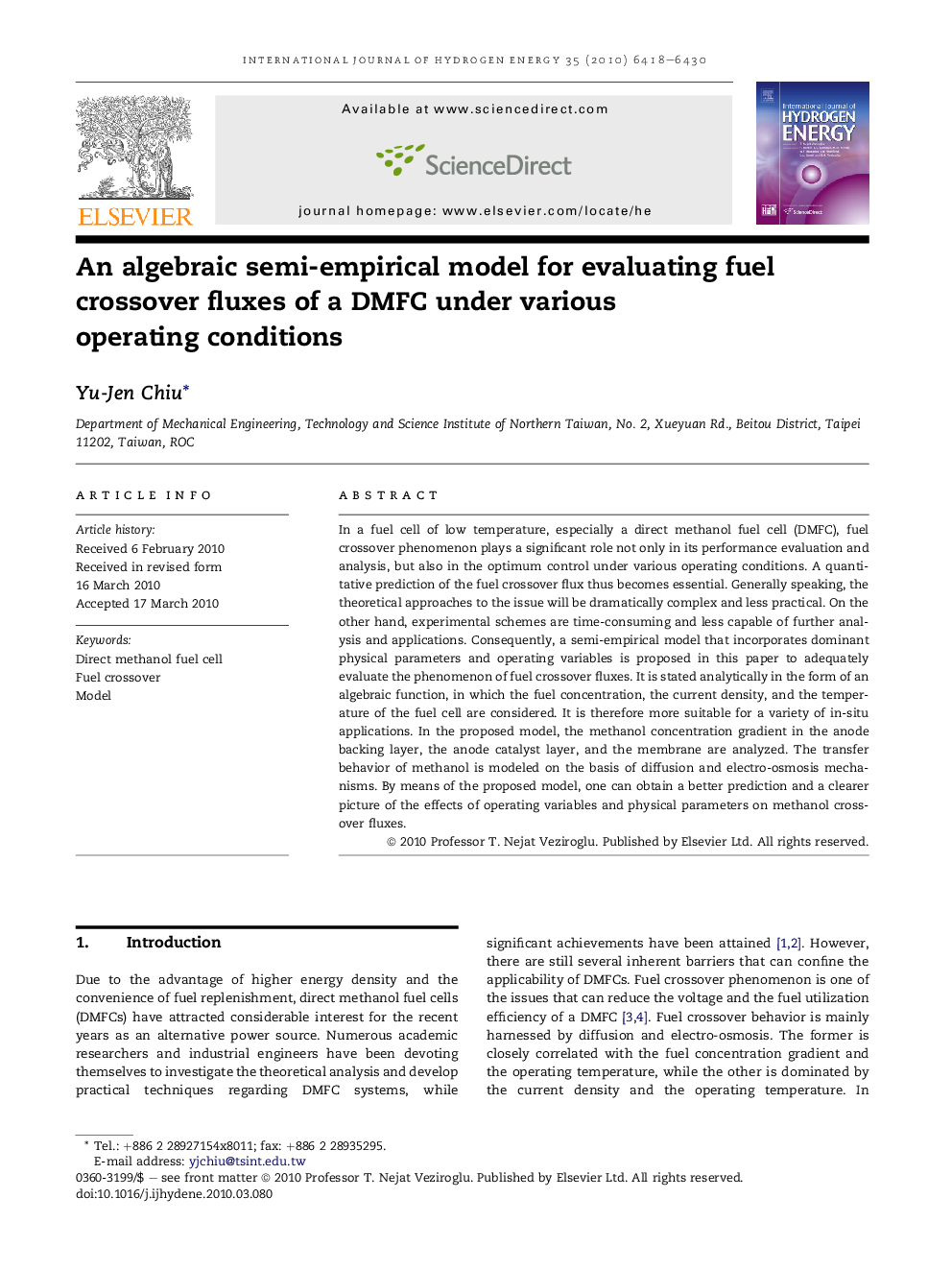| Article ID | Journal | Published Year | Pages | File Type |
|---|---|---|---|---|
| 1277104 | International Journal of Hydrogen Energy | 2010 | 13 Pages |
In a fuel cell of low temperature, especially a direct methanol fuel cell (DMFC), fuel crossover phenomenon plays a significant role not only in its performance evaluation and analysis, but also in the optimum control under various operating conditions. A quantitative prediction of the fuel crossover flux thus becomes essential. Generally speaking, the theoretical approaches to the issue will be dramatically complex and less practical. On the other hand, experimental schemes are time-consuming and less capable of further analysis and applications. Consequently, a semi-empirical model that incorporates dominant physical parameters and operating variables is proposed in this paper to adequately evaluate the phenomenon of fuel crossover fluxes. It is stated analytically in the form of an algebraic function, in which the fuel concentration, the current density, and the temperature of the fuel cell are considered. It is therefore more suitable for a variety of in-situ applications. In the proposed model, the methanol concentration gradient in the anode backing layer, the anode catalyst layer, and the membrane are analyzed. The transfer behavior of methanol is modeled on the basis of diffusion and electro-osmosis mechanisms. By means of the proposed model, one can obtain a better prediction and a clearer picture of the effects of operating variables and physical parameters on methanol crossover fluxes.
